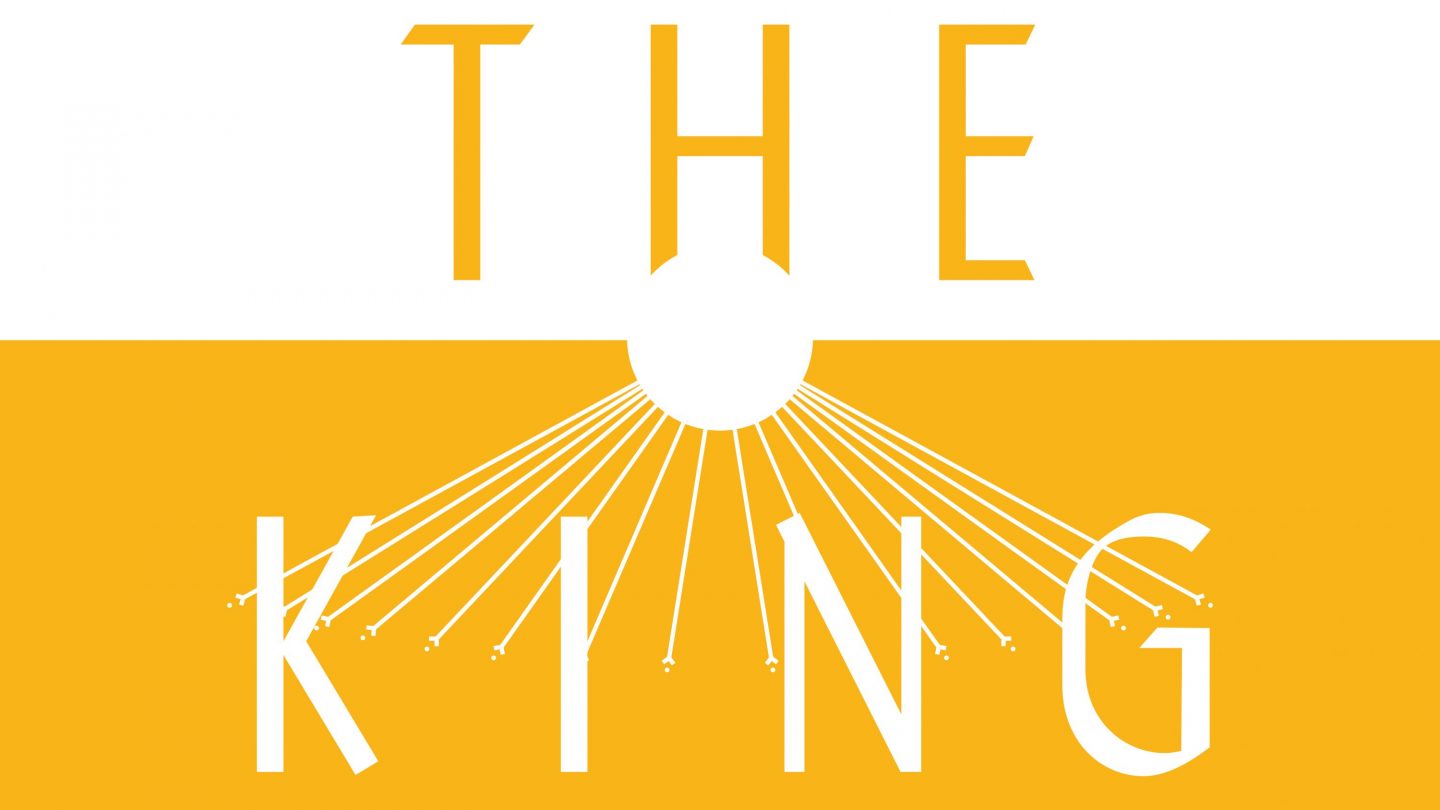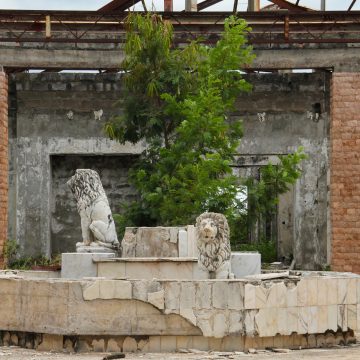
Sun King
What happens when an emperor decides to change the religion of an entire people? Forget the Tudors. This is reformation – and counter-reformation – ancient Egyptian style.
In the middle of the second millennium BC, a king called Amenhotep Neferkheperure-Waenre – Amenhotep IV – inherited the throne of Egypt from his father and decided things needed to change.
The Egyptian state and tradition of divine kingship was by now 1,500 years old. The country was enjoying a period of internal stability and great international prestige, with an empire that stretched from what is now central Sudan all the way to Lebanon. The preceding reign, of King Amenhotep III, had been marked by a focus on the celebration of royal power and the king’s relationship with the gods, with a monumental building programme and massive output of luxury goods for the royal court, elite and international gift exchange.
Against this backdrop of stability and wealth, the new king, Amenhotep IV, set in motion a programme of unprecedented religious reformation focused on the Aten, the visible sun disk.
Egypt had always been polytheistic: there were multiple gods with varying forms and characteristics that could be syncretised or associated through familial relationships, hierarchies or regional affiliations. Now, Amenhotep IV chose to raise the Aten to pre-eminence, while simultaneously destroying the names and images of Egypt’s other gods on existing monuments.
A new direction
To understand what was going on, we first need to look at the available evidence. Finding ways to communicate a new direction or ideology is a perennial problem for rulers throughout history. What is particularly interesting in this case is the speed, extent and reach of the changes discernible in the textual and archaeological record. First, Amenhotep IV changed his given name to Akhenaten, reflecting the move away from the pre-eminence of the traditional state god Amun. Royal names in Egypt carried significant meaning and can be a useful indication of ideological trends, although some terms are not easy to translate. An akh is a transfigured spirit in Egyptian thought, and the term has strong associations with power and effectiveness, as well as with light and luminosity. The king’s new name means something along the lines of ‘Shining-transfigured-spirit-of-the-sun-disk’: a clear indication of the new theological direction as well as the close relationship between the king and god within this.
Second, King Akhenaten – as he was now known – made significant changes to how the god was depicted. In contrast to earlier representations of Egyptian gods, the Aten was portrayed as a sun disk with solar rays descending from it; each ray had a tiny hand and these hands were often shown holding the ankh sign (a hieroglyph reading ‘life’). Images show the king and royal family lifting up offerings to the sun disk, while the disk holds ankh signs to the faces of the offerants in a reciprocal gesture. Changes were also made to the proportions, postures and style of representations of the human body as well as their contexts, while an exaggerated ‘naturalism’ is seen in depictions of plants and animals.
King Akhenaten has been seen, among other interpretations, as a religious visionary, a utopian social reformer destroying the entrenched power of the Amun priesthood, and a megalomaniac narcissist.
Temple architecture changed from the traditional provision of dark interiors within which the statues of the gods were housed to open-air temples full of sunlight, with platforms for solar worship and tables for the regular offerings of food and drink for the god. Temple decoration was different in style, content and method of carving relief; the size and regularity of building blocks and some construction methods were changed. The language of monumental inscriptions shifted from the classical language traditionally used in such settings towards contemporary vernacular, and content was radically revised. All these departures from traditional practice show the degree to which Akhenaten intended his new religious programme to be seen as radical, and that he was willing to shock the conservative Egyptian elite with the buildings, texts and art that he commissioned.
Finally, Akhenaten deliberately sought out a site that had not previously been dedicated to other gods to provide an uncontaminated setting for religious practice. He built a new settlement called Akhetaten, ‘Horizon of the Aten’, at a site in Middle Egypt now known as Amarna, outlining the reasons for his choice of location and his vision for the place in a series of monumental inscriptions cut into the bordering cliffs.
Yet these dramatic changes would be short-lived. King Akhenaten died after 17 years on the throne; following a number of short reigns, the throne passed to Tutankhamun, (thought to be Akhenaten’s son or close relative), who swiftly re-established the old order. The city of Akhenaten was largely abandoned and, over the next few decades, the images and names of Akhenaten were destroyed or removed, and the temples and palaces of Amarna were dismantled.
Understanding King Akhenaten
King Akhenaten and his programme of religious reform has long fascinated writers, thinkers and creatives including Sigmund Freud, Thomas Mann, Naguib Mahfouz and Philip Glass – speculation on his intentions and motivation for change has raged for more than a century. He has been seen, among other interpretations, as a religious visionary, a utopian social reformer destroying the entrenched power of the Amun priesthood, and a megalomaniac narcissist.
This dramatic change would be short-lived. Once the throne passed to Tutankhamun, the old order was swiftly re-established
From an archaeological perspective, however, interpreting these changes remains very difficult. Archaeology works well when investigating patterning and long-term change, but interpreting the motivation of an individual from the material record is hard at the best of times. When the individual concerned has the resources of a wealthy state at their disposal and an obvious desire to be very different, the underlying motivation is likely to remain elusive. Texts can be hugely valuable – but, of course, selective use of evidence and political spin are not inventions of the modern world. Texts of the Amarna period reference divine inspiration and allude obliquely to significant opposition, presumably within the royal court and among the elite. Autobiographies of successful officials of the period often reflect a sense of personal obligation to the king and sometimes suggest personal instruction by him, but do not speculate on his vision.
Most of the major changes outlined above were in place by the time construction started at Amarna, around the fifth year of King Akhenaten’s reign. However, earlier activity at other sites can help to establish the timing, nature and progression of the changes made prior to the Amarna episode. Blocks, foundations and figures from a huge statue-lined courtyard structure were discovered outside the state temple of Amun at Karnak, in modern Luxor, while decorated blocks survive from other structures around the temple; these show a focus on solar deities from the beginning of the reign. But it is at the site of Sesebi in northern state, Sudan, that some of the most revealing evidence is found.
Uncovering a timeline
Sesebi is the modern name of an ancient Egyptian walled colonial town constructed right at the beginning of the reign of Akhenaten. The site was excavated in the 1930s by the Egypt Exploration Society but, other than brief preliminary reports, the findings were never published. Research at the site since 2008 by a team led by myself and Dr Pamela Rose of the Austrian Archaeological Institute in Cairo, in collaboration with Sudan’s National Corporation for Antiquities and Museums, has shown that although the site had already been occupied for around 200 years prior to the construction of the walled town, earlier structures had been levelled before this work started.
And it is from the construction and decoration of the main temple at Sesebi that we start to glean information about the rapidly changing religious ideology of the early reign of Amenhotep IV. Work must have started very early in the new reign as foundation deposits beneath the corners of the temple give the young king’s name as Amenhotep (rather than Akhenaten), and enough decoration survives to show that the new temple structure was initially dedicated to the god Amun.
Beneath the floor of the temple, a unique crypt preserves decoration that must be among the earliest surviving from the reign. Images of the king’s deified father are shown, alongside other gods of Egypt. The crypt was carved into low-raised relief but seems never to have been painted – because before this stage of the decoration commenced, we find evidence of deliberate damage to the reliefs.
The initial damage seems to have involved the careful removal of images of a handful of gods, including Amun. The chiselling is delicate and the surface has been smoothed over in preparation for projected re-carving of the decoration in the area. Further images of gods were removed in a second phase – the chisel used is different and the blows are less careful, with no attempt to prepare the surface of the wall for further work. Two of the images of the king were re-carved at some stage following the style of carving found later in Akhenaten’s reign, and the figures of the king were later hacked out with force and determination, presumably in the post-Amarna period.
This one small room, therefore, bears evidence of the religious changes from the very beginning of his reign to their attempted destruction after his death. It shows that change during Akhenaten’s early reign was incremental, and illustrates the destructive and iconoclastic nature of later years as images were hacked out even in temples he himself had constructed. Alongside this, we see at Sesebi and Karnak extraordinary creativity and experimentation in construction, decoration and in the production of royal images, as craftsmen worked to express the nature and depth of change required by the king.
Akhenaten’s reign provides an early example of religious change, iconoclasm and the search for effective methods for materialising new ideas and of signalling changing directions. There remains much work to be done in terms of interpreting this extraordinary episode in the history of ideas – ensuring that the reign of King Akhenaten, the original Sun King, is likely to fascinate for many generations to come.
Dr Kate Spence is a University Senior Lecturer in the Department of Archaeology and a Fellow of Emmanuel. This feature draws on extensive work at Amarna by Barry Kemp, Emeritus Professor of Egyptology, and his team, and that of Dr Anna Stevens, Honorary Research Associate of the University’s McDonald Institute for Archaeological Research.
The sites at Amarna and Sesebi are under threat from development. Working in partnership with the Egyptian Ministry of Tourism and Antiquities, Dr Spence, Dr Stevens and Dr Gemma Tully have developed a site management plan, guidebook, video and site signage for Amarna; and, in collaboration with children in Amarna, Cairo and Cambridge, the team has developed a children’s book on life at Amarna to be published in Arabic and English, and a video for use in schools. This work was funded through the British Council and the Egyptian Science and Technology Development Fund through the Newton-Mosharafa scheme, and by a grant from the University of Cambridge Arts and Humanities Impact Fund.







